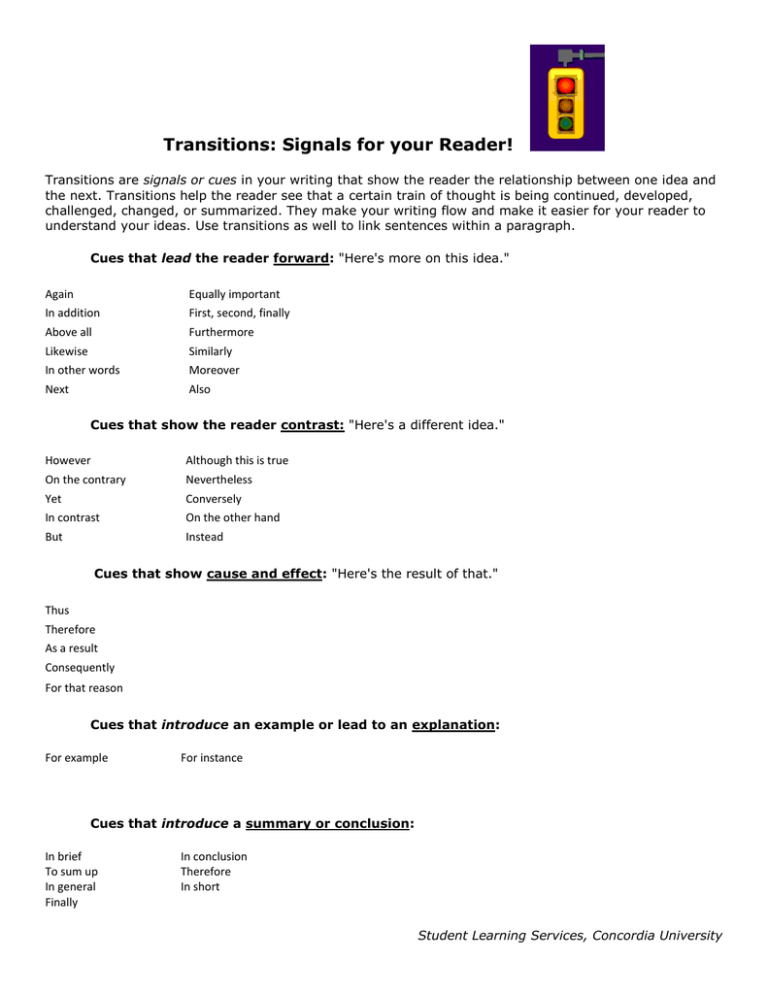Transitions: Signals for your Reader!
advertisement

Transitions: Signals for your Reader! Transitions are signals or cues in your writing that show the reader the relationship between one idea and the next. Transitions help the reader see that a certain train of thought is being continued, developed, challenged, changed, or summarized. They make your writing flow and make it easier for your reader to understand your ideas. Use transitions as well to link sentences within a paragraph. Cues that lead the reader forward: "Here's more on this idea." Again Equally important In addition First, second, finally Above all Furthermore Likewise Similarly In other words Moreover Next Also Cues that show the reader contrast: "Here's a different idea." However Although this is true On the contrary Nevertheless Yet Conversely In contrast On the other hand But Instead Cues that show cause and effect: "Here's the result of that." Thus Therefore As a result Consequently For that reason Cues that introduce an example or lead to an explanation: For example For instance Cues that introduce a summary or conclusion: In brief To sum up In general Finally In conclusion Therefore In short Student Learning Services, Concordia University



